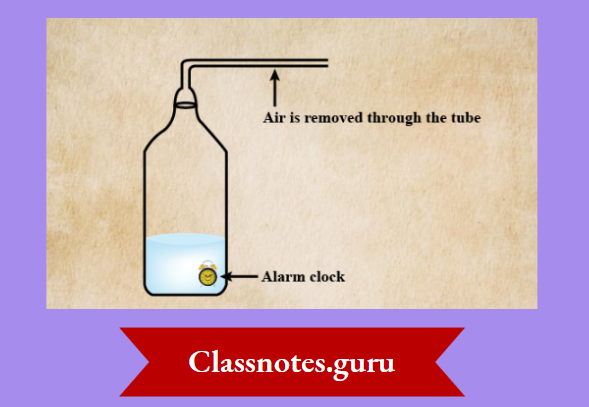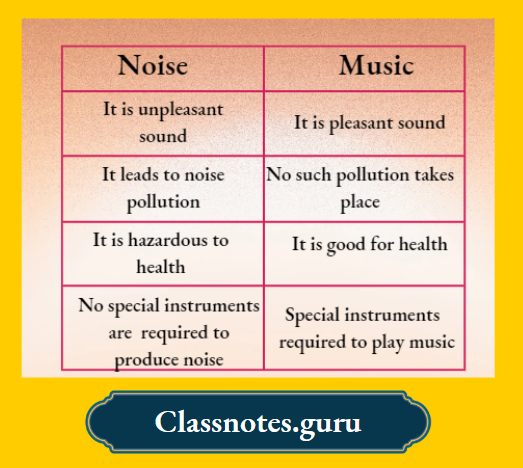NCERT Solutions For Class 8 Science Chapter 11 Chemical Effects Of Electric Current SAQs

Question 1. Explain in brief the procedure of glowing of bulb in a liquid.
Answer:
If the liquid between the two ends ofa tester allows the electric current to pass, then the circuit of the tester becomes complete.
The current flows in the circuit, and the bulb glows. When the liquid does not allow the electric current to pass, the circuit of the tester is not complete, and the bulb does not glow.
NCERT Class 8 Science Chapter 11 Chemical Effects of Electric Current SAQs
Question 2. State the reason why we need a magnetic compass to test the conduction of electric current.
Answer:
Sometimes the bulb does not glow on passing electric current. This is because the electric current flowing through a conductor is so small So in case ofsmall current, we need magnetic compass to test the conduction.
Question 3. Observe the figure.
image-
Which of these two circuits A or B shows the correct observation? It is not clear from the diagram that what u A and B. So. cannot predict the actual solution. But if wr compare with activity. this seems to be a potato and correct diagram is A because positive terminal makes the green spot on the potato.
Question 4. Explain how we can purify the impure metals.
Answer:
By an electrolysis process, we use a thick rod of impure metal as an anode and a thin strip of pure metal as a cathode. A water-soluble salt ofthe metal is taken as electrolyte.
On passing electric current, the metal dissolves from the impure anode and goes into electrolyte solution which is then deposited on the cathode in pure form.

Question 5. We should throw the conducting materials used in electroplating far away from residential areas. Explain why?
Answer:
As the conducting solutions or electrolytes contain various types of sites which may be poisonous and also usually addie in nature.
So, in electroplating factories. the disposal ofused conducting materials is a major problem and it should be disposed offin a proper way far away from the human population.
NCERT Solutions for Chemical Effects of Electric Current Chapter 11
Question 6. State some advantages of electroplating.
Answer: The advantages of electroplating are given below
- It protects the metal from corrosion and rusting.
- It is used to coat desired metals on other objects.
- It can make more reactive metals like iron.
- Coating of chromium on the metal gives luster to the objects.
Question 7. Paheli wants to deposit silver on an iron spoon. She took silver nitrate (AgNO.) solution in a beaker and set up a simple circuit for electroplating. Which terminal of the battery should the spoon be connected to? What material should the other electrode be made of
Answer:
The spoon should be connected to the negative terminal of the battery. The other electrode should be of silver, so that silver ions get deposited on an iron spoon.
Question 8. In case of a fire, before the firemen use the water hoses, they shut off the main electrical supply for the area. Explain why they do this.
Answer:
Since tap water is a very good conductor of electricity. So, if the main electrical supply remains ON, it can be fatal to human life because it can lead to electrocution due to water.
NCERT Class 8 Science Chapter 11 SAQ
Question 9. A child staying in a coastal region tests the drinking water and also the seawater with his tester. He finds that the compass needle deflects more in the case of seawater. Can you explain the reason?
Answer:
As we know that the current produces the magnetic effect and causes the deflection in a magnetic needle. In the case of seawater, the salt content is much higher than that of drinking water. Thus, it produces more current than drinking water.
Therefore, as a result, the deflection in the magnetic needle It is more in the case of seawater rather than drinking water.
Chemical Effects of Electric Current SAQs Class 8 NCERT Solutions
Question 10. Is it safe for the electrician to carry out electrical repairs outdoors during a heavy downpour? Explain.
Answer:
No, it is not safe for the electrician to carry out electrical repairs outdoors during heavy downpour. Because rainwater is a good conductor of electricity. So, during heavy downpour, there is a huge risk ofelectrocution.
Question 11. Paheli had heard that rainwater is as good as distilled water. So, she collected some rainwater in a clean glass tumbler and tested it using a tester. To her surprise, she found that the compass needle showed deflection. What could be the reasons?
Answer:
While it rains, the raindrops get mixed with the suspended particles of the air. So, they do not remain pure. It becomes a mixture of salts and other impurities. Thus, it shows the conduction of electricity.
But in case of distilled water, no conduction of electricity takes place as distilled water do not contain salts or impurities. Thus, it becomes a bad conductor of electricity.
Question 12. Prepare a list of objects around you that are electroplated.
Answer:
List of objects that are electroplated arc as follows;
- Bath taps, kitchen gas burners,
- Jewellery makers electroplate silver and gold on less expensive metals.
- Electroplating iron cans with tin to store food.
- Handlebars, bar cycles, and motorcycles.
- Rims of cycles, buckles of clothes, and belts,
Question 13. Explain how we can purify the impure metals.
Answer:
By an electrolysis process, we use a thick rod of impure metal as an anode and a thin strip of pure metal as a cathode. A voter soluble salt ofthe metal is taken as electrolyte.
On passing electric current, the metal dissolves from the impure anode and goes into electrolyte solution which is then deposited on the cathode in pure form.
SAQs for Chemical Effects of Electric Current Chapter 11 Class 8
Question 14. We should throw away the conducting materials used in electroplating far away from residential areas. Explain why?
Answer:
As the conducting solutions or electrolytes contain various types of salts, which may be poisonous, and also usually addictive.
So, in electroplating factories. the disposal ofused conducting materials is a major problem and it should be disposed offin a proper way far away from the human population.
Question 15. State some advantages of electroplating.
Answer:
The advantages of electroplating are given below
- It protects the metal from corrosion and rusting.
- It is used to coat desired metals on other objects.
- It can make more reactive metals like iron.
- Coating of chromium on the metal gives luster to the objects.
Question 16. Paheli wants to deposit silver on an iron spoon. She took silver nitrate (AgNO.) solution in a beaker and set up a simple circuit for electroplating. Which terminal of the battery should the spoon be connected to? What material should the other electrode be made of
Answer:
The spoon should be connected to the negative terminal of the battery. The other electrode should be of silver, so that silver ions get deposited on an iron spoon.
Question 17. Last Monday, Ankush woke up late in the morning. So, he saw the time and suddenly realised that he had got late for an interview, which he was supposed to give after reaching the venue by the right time.
Immediately, he turned ON the geyser, but it did not work. He got more tense, then he used an electric iron rod through which he could get some boiled water for his bath.
There was an earthing problem in the switchboard, which he was unaware of.
He was barefoot and was just about to switch ON the electric iron rod, but at the same he was stopped from doing so by one of his room partner living with him. It could be dangerous for Ankush.
- Explain in brief that what could be happened with Ankush. if he switched ON the electric iron rod (without wearing any slippers in his foot).
- Mention the values shown by Ankush’s friend.
Answer:
If Ankush switched ON the electric iron rod and (without wearing any footwear), then he could have met with some accident, either in the form of electrical sparking or short circuit of the switchboard.
Ankush’s friend seems to be very intelligent and very much concerned for Ankush as well.
NCERT Solutions for SAQs on Chemical Effects of Electric Current
Question 18. Explain in brief the procedure for glowing of the bulb in a liquid.
Answer:
If the liquid between the two ends of a tester allows the electric current to pass, then the circuit of the tester becomes complete.
The current flows in the circuit and the bulb glows. When the liquid does not allow the electric current to pass, the circuit of the tester is not complete, and the bulb does not glow.
Question 19. State the reason why we need a magnetic compass to test the conduction of electric current.
Answer:
Sometimes the bulb does not glow on passing electric current. This is because the electric current flowing through a conductor is so small So in case of small current, we need magnetic compass to test the conduction.






















